This has been our everyday buttermilk pancake recipe for decades!
The recipe uses common pantry ingredients and rewards you with incredibly fluffy, buttery pancakes with minimal time and effort. It's not an exaggeration to say that we've been eating these about once a week for years and no one around here is mad about it.
Everyone needs a delicious, no-fail, super quick pancake recipe, and this is mine. I hope it will become a favorite in your home as well.
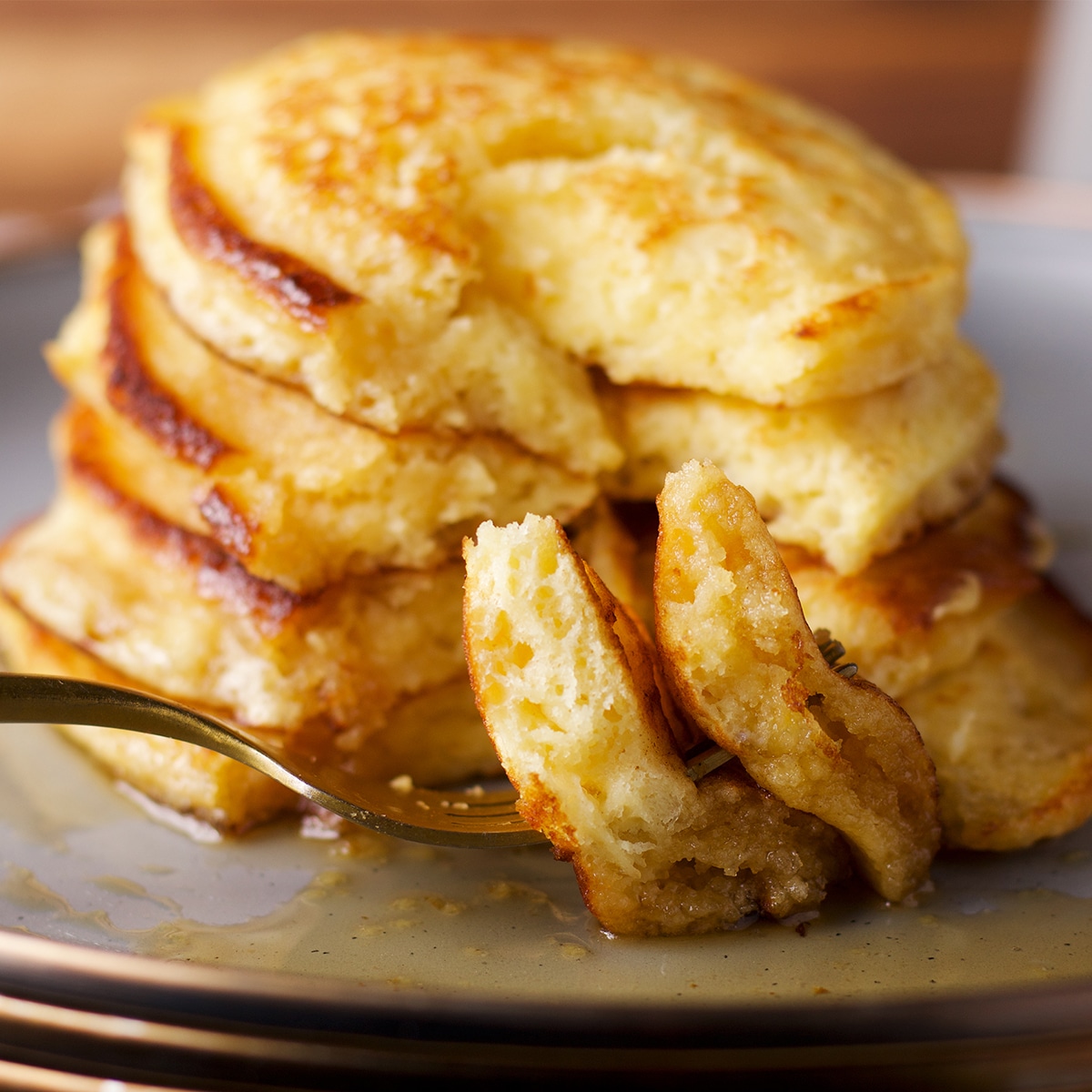
As much as I adore Blueberry Pancakes and Apple Cinnamon Pancakes, and supremely decadent Lemon Ricotta Pancakes, THESE are the pancakes I make the most often.
They are a favorite weekend breakfast and one of our favorite quick weeknight dinners. Because no one in my house ever said no to pancakes for dinner, least of all me.
The recipe is easily cut in half if you're only making pancakes for 2 or 3 people. Or, if you're making pancakes for a crowd it's easy to double or even triple the recipe.
Jump to:

+ Subscribe to my newsletter for new and exclusive recipes in your in-box every month! As a full time traveler, living, working, cooking, and baking from a 5th wheel RV, it's also where I share our experiences of life on the road.
Ingredients Needed to Prepare This Recipe
I've got nothing against pancake mix. I just feel that if you're the type of person who typically has staples like flour, butter, sugar, eggs, and milk in your kitchen, pancake mix is unnecessary.
Mixing up the batter for these Everyday Homemade Pancakes takes about 5 minutes, which is hardly a time commitment for anyone. And, since the reward is a tall stack of fluffy, buttery pancakes, it's always time well spent.
Here's what you need to make these buttermilk pancakes:
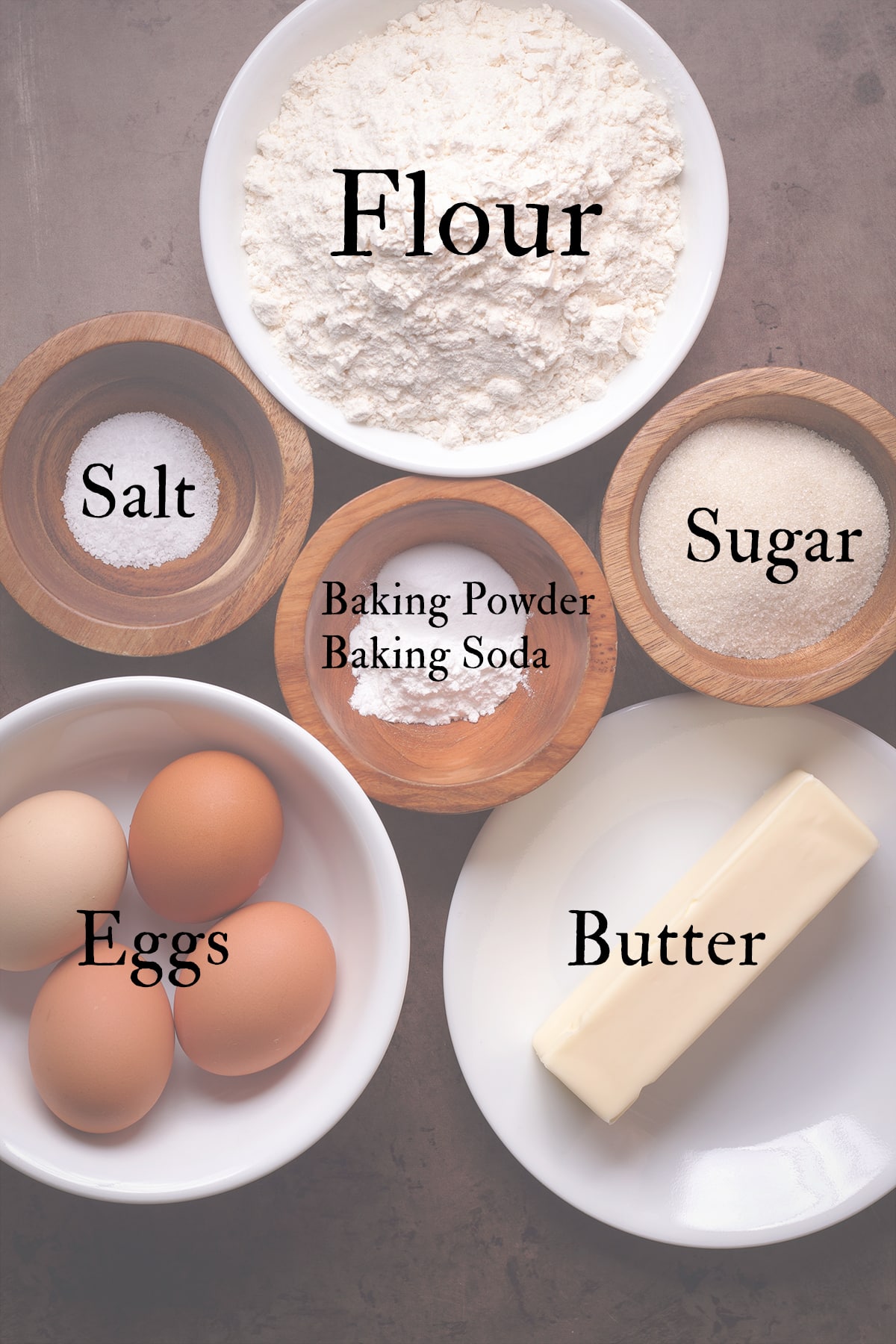
- All-purpose flour, preferably unbleached.
- Baking powder, preferably without added aluminum.
- Baking soda
- Salt
- Granulated sugar
- Eggs
- Buttermilk. If you don't have any buttermilk, here are 7 ways to make homemade buttermilk.
- Butter. I always use salted butter to make pancakes but if you're sensitive to salt, use unsalted instead.
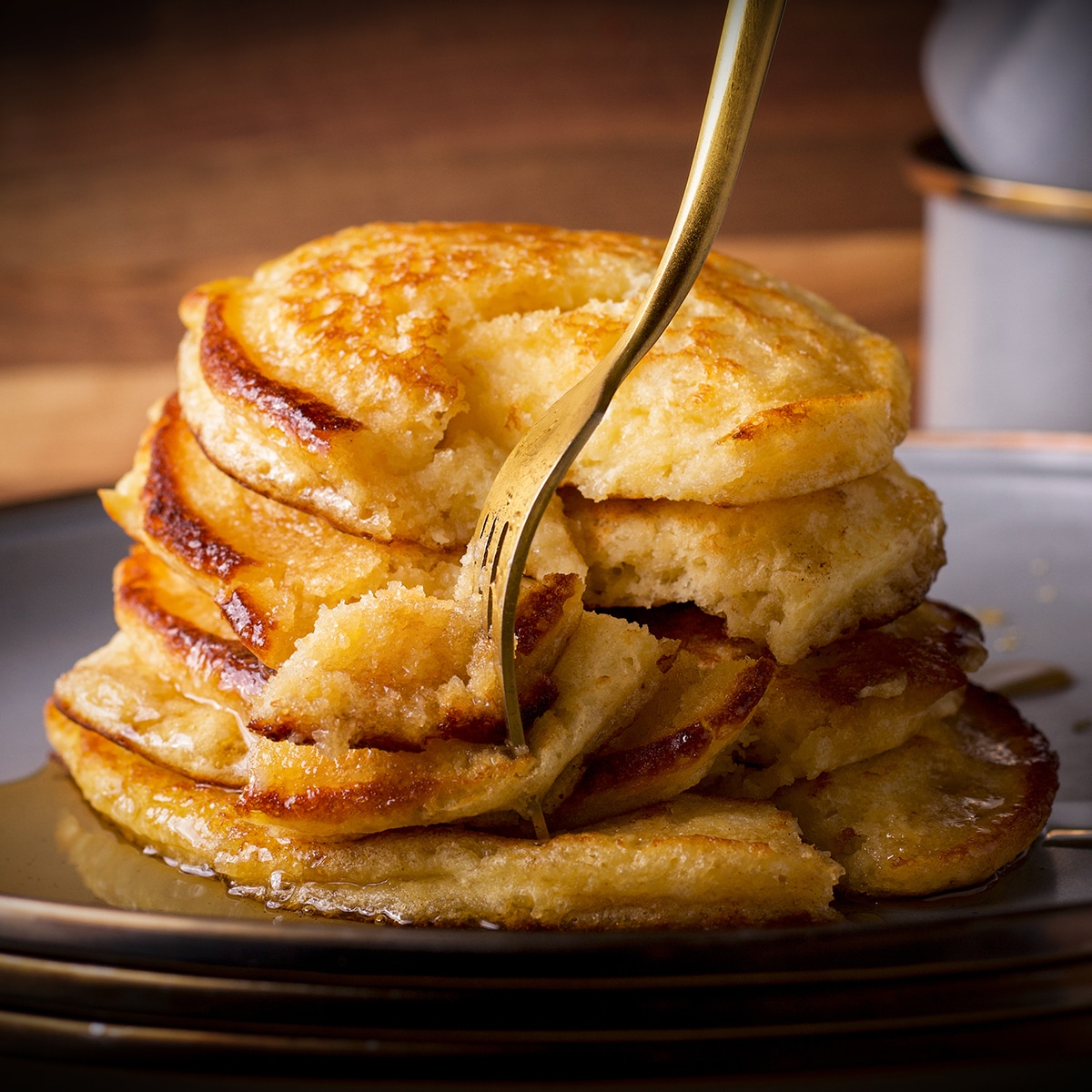
Step-by-Step Photos and Instructions
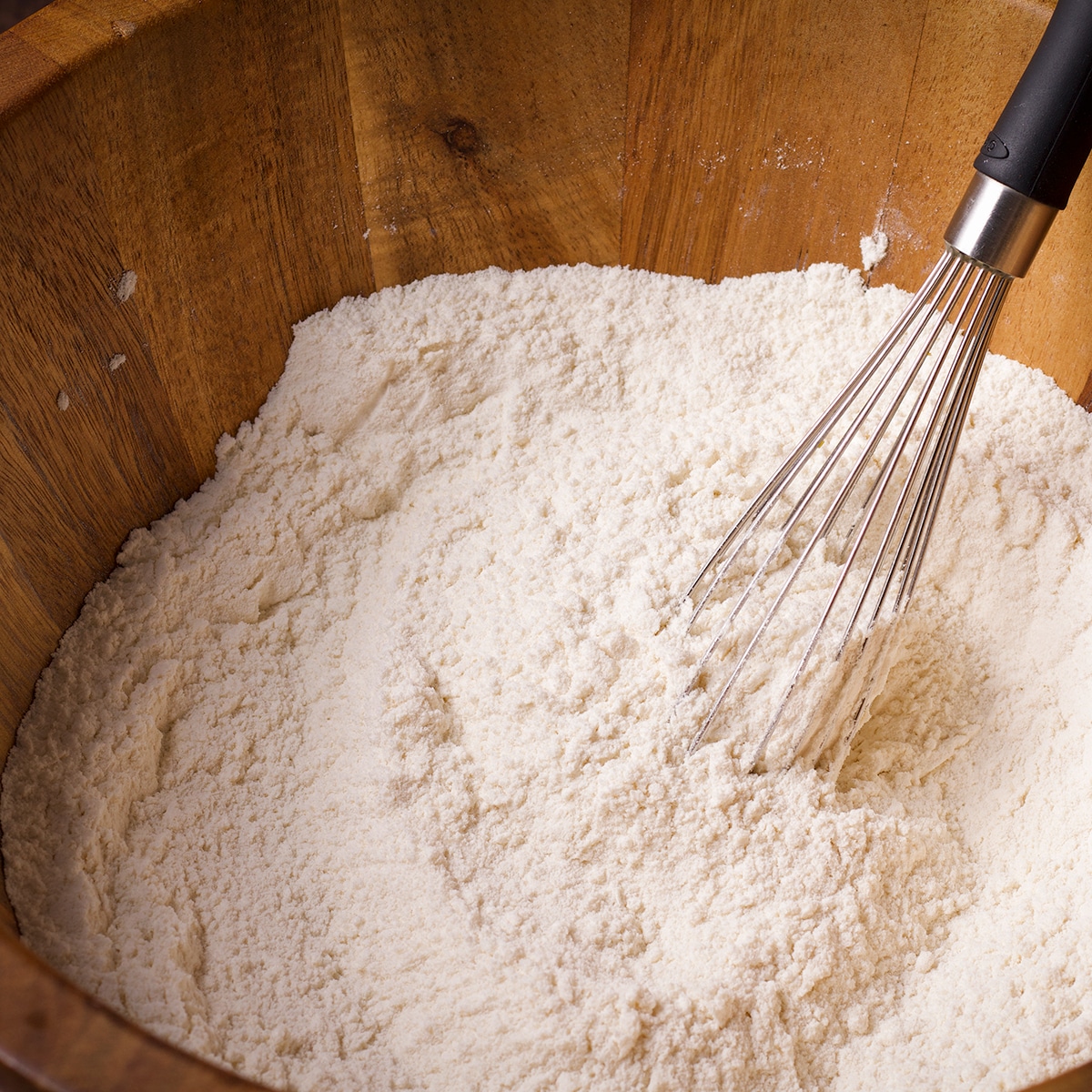
Add all the dry ingredients to a bowl and stir with a wire whisk to combine.
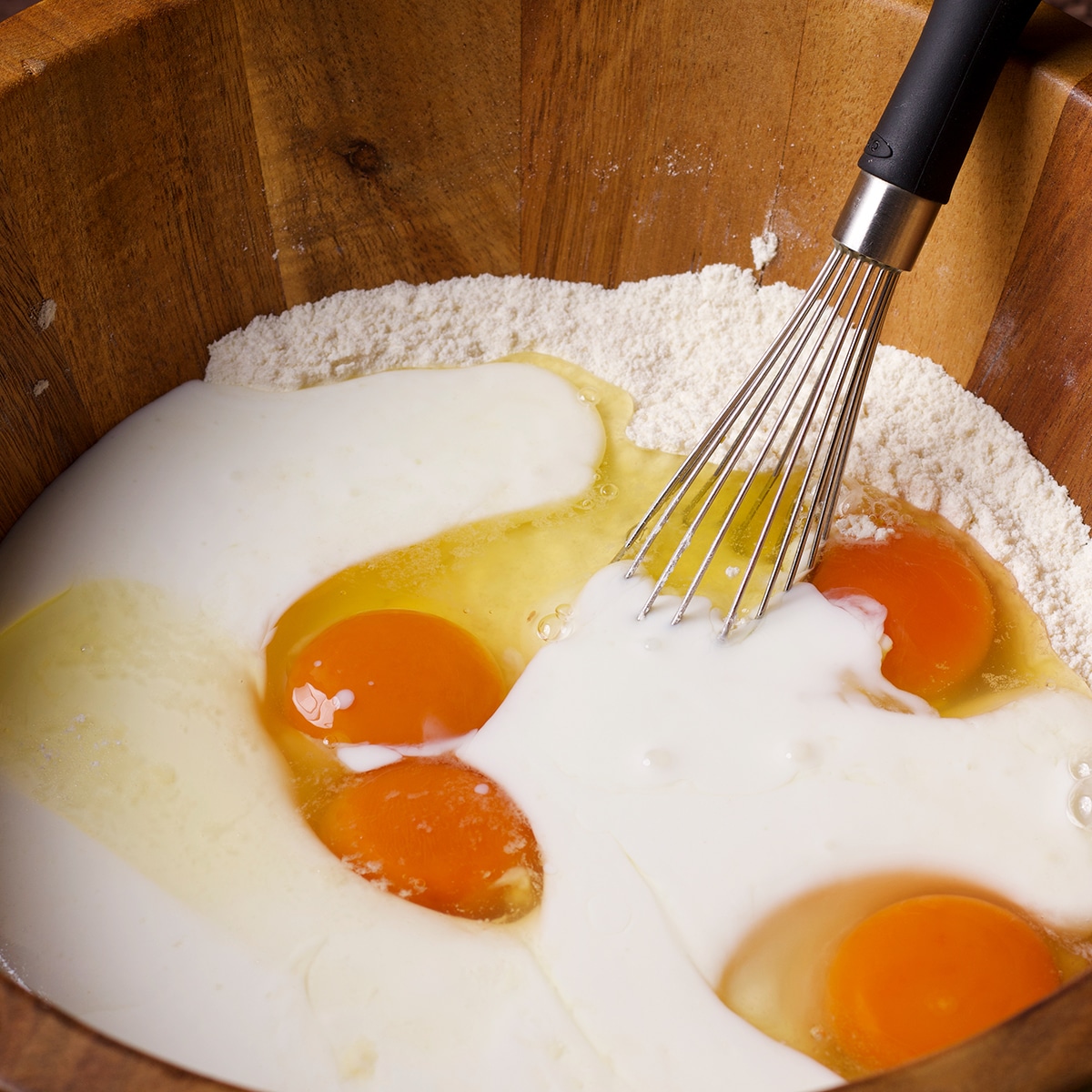
Add the eggs, buttermilk, and melted butter and whisk just until the ingredients are combined.
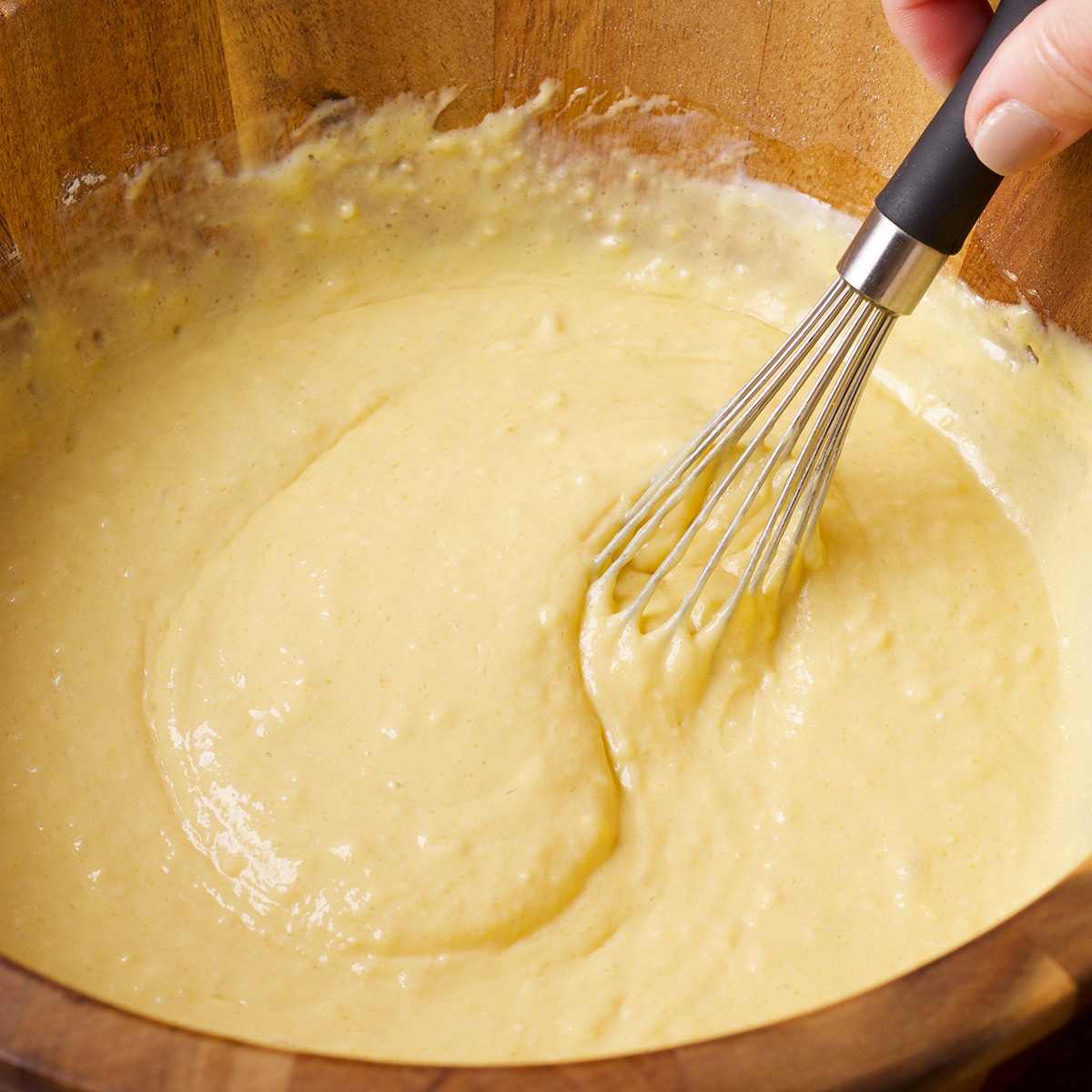
You will have a few small lumps - that's ok. It's important to not overwork the batter.
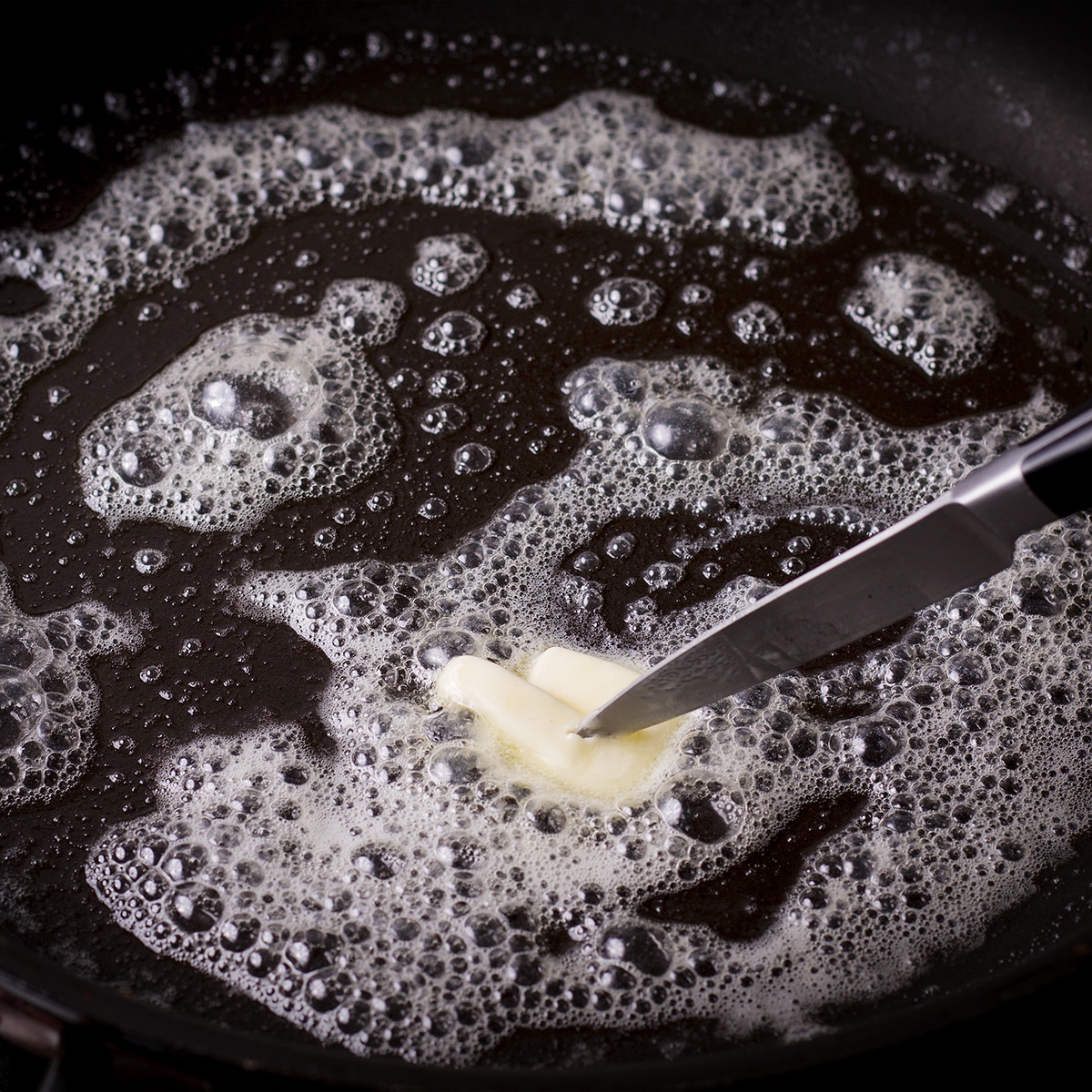
Set a skillet over medium heat and add enough butter to generously coat the bottom of the skillet.
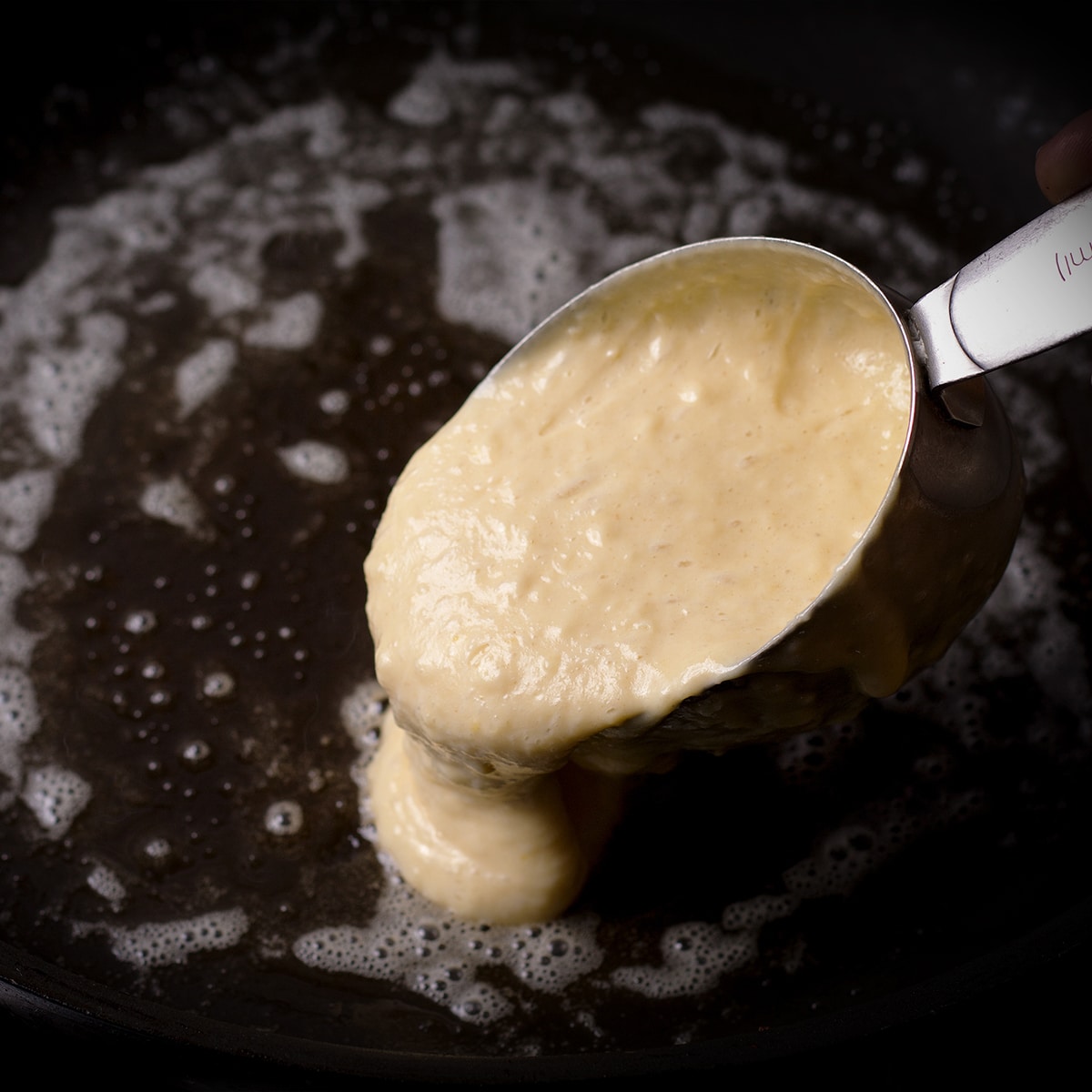
When the butter has melted, add the batter to the skillet to form pancakes.
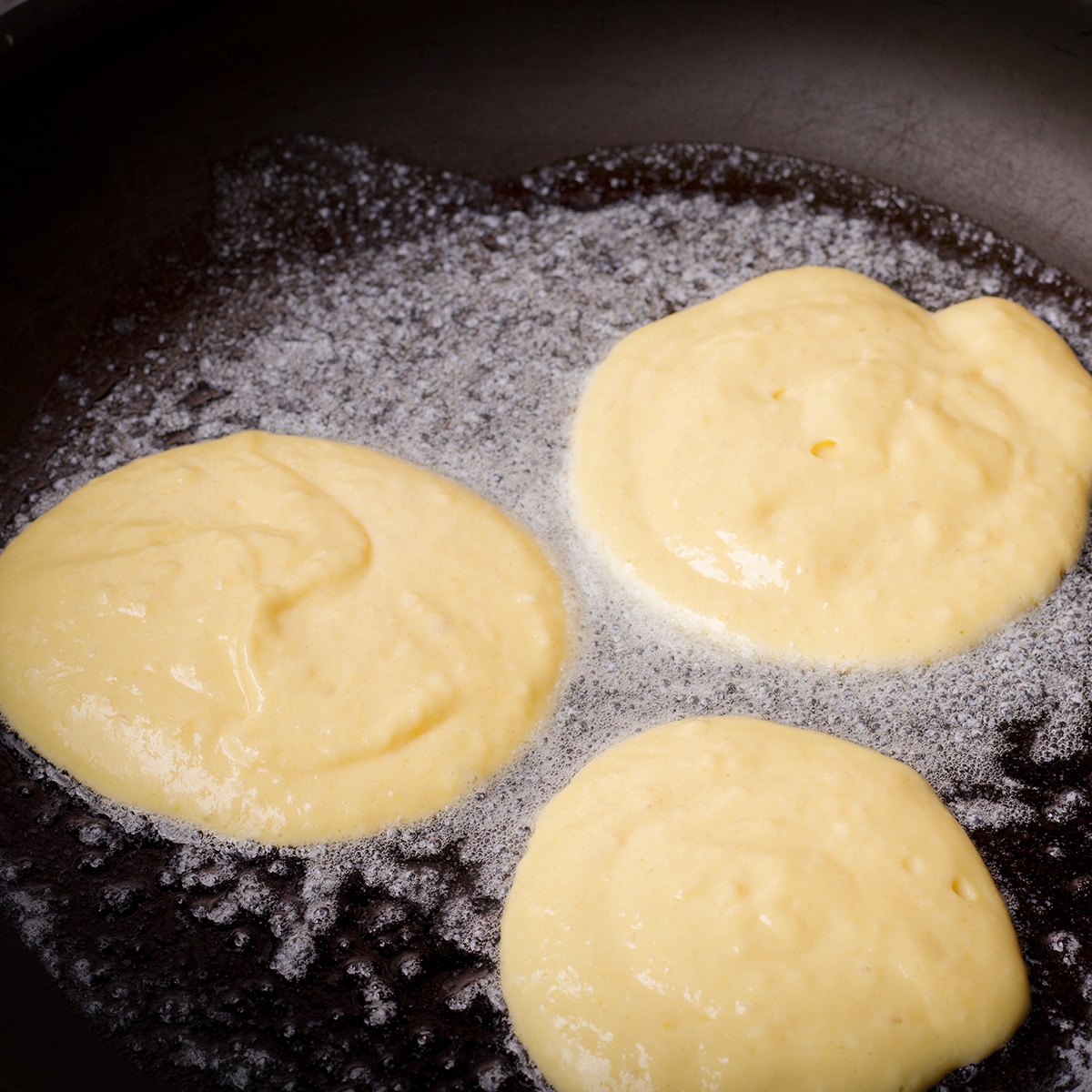
I usually use about ⅓ cup of batter per pancake - BUT don't pour it all in at once. Add a bit of batter to the skillet to form small pancakes.
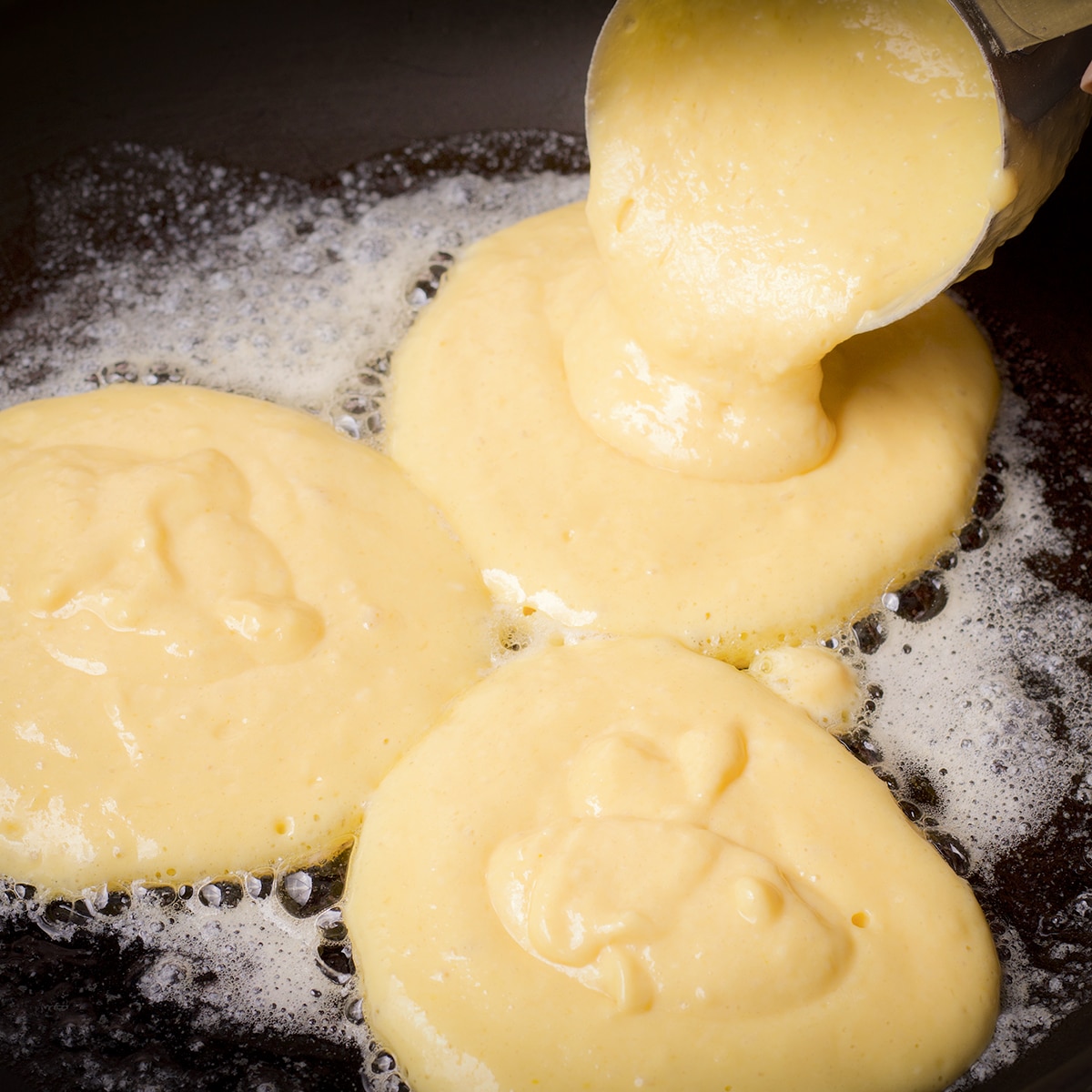
As the batter on the bottom begins to set, add more batter on top of each pancake. This will create thick, fluffy pancakes.
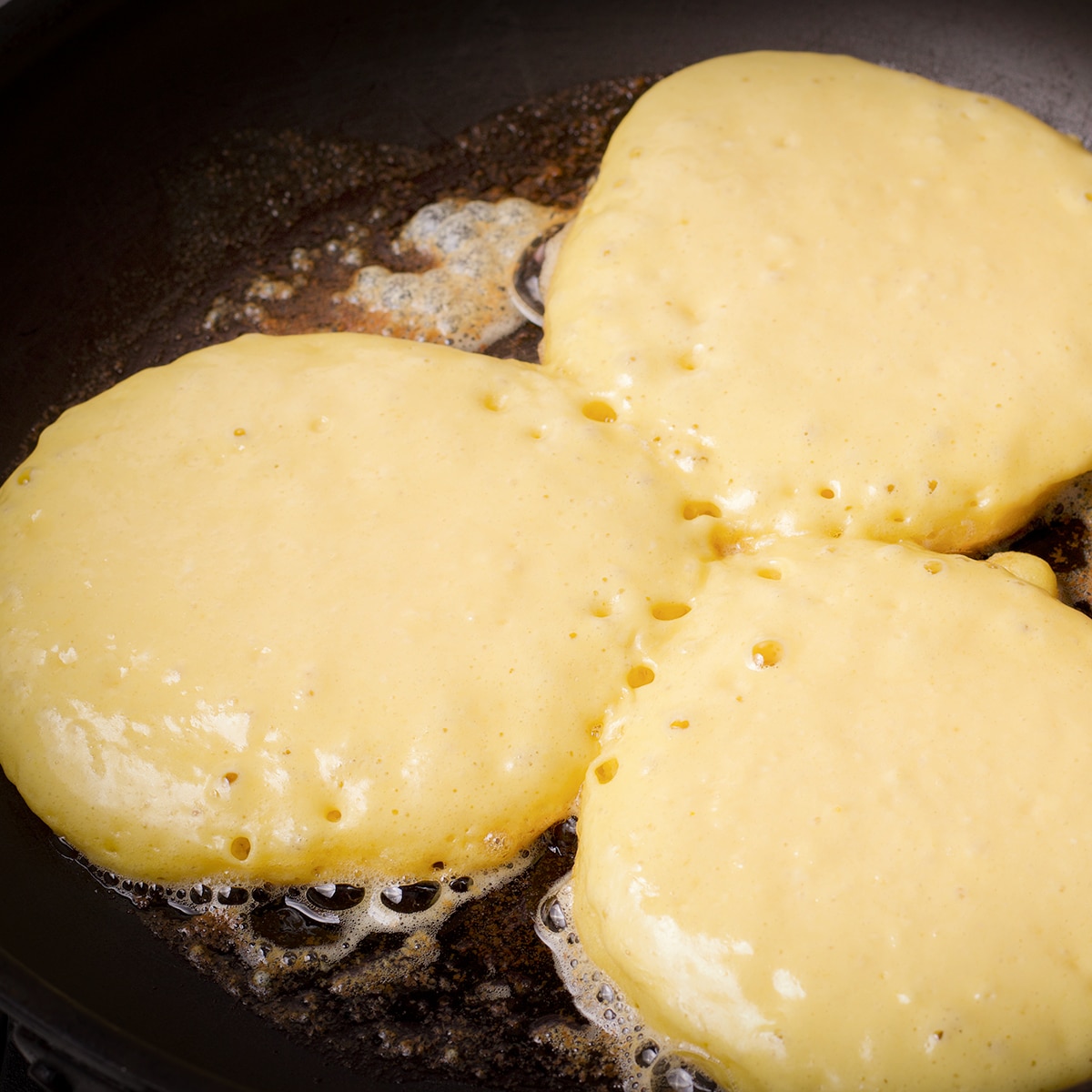
When the tops of the pancakes are covered in small bubbles and the sides look set, they are ready to flip.
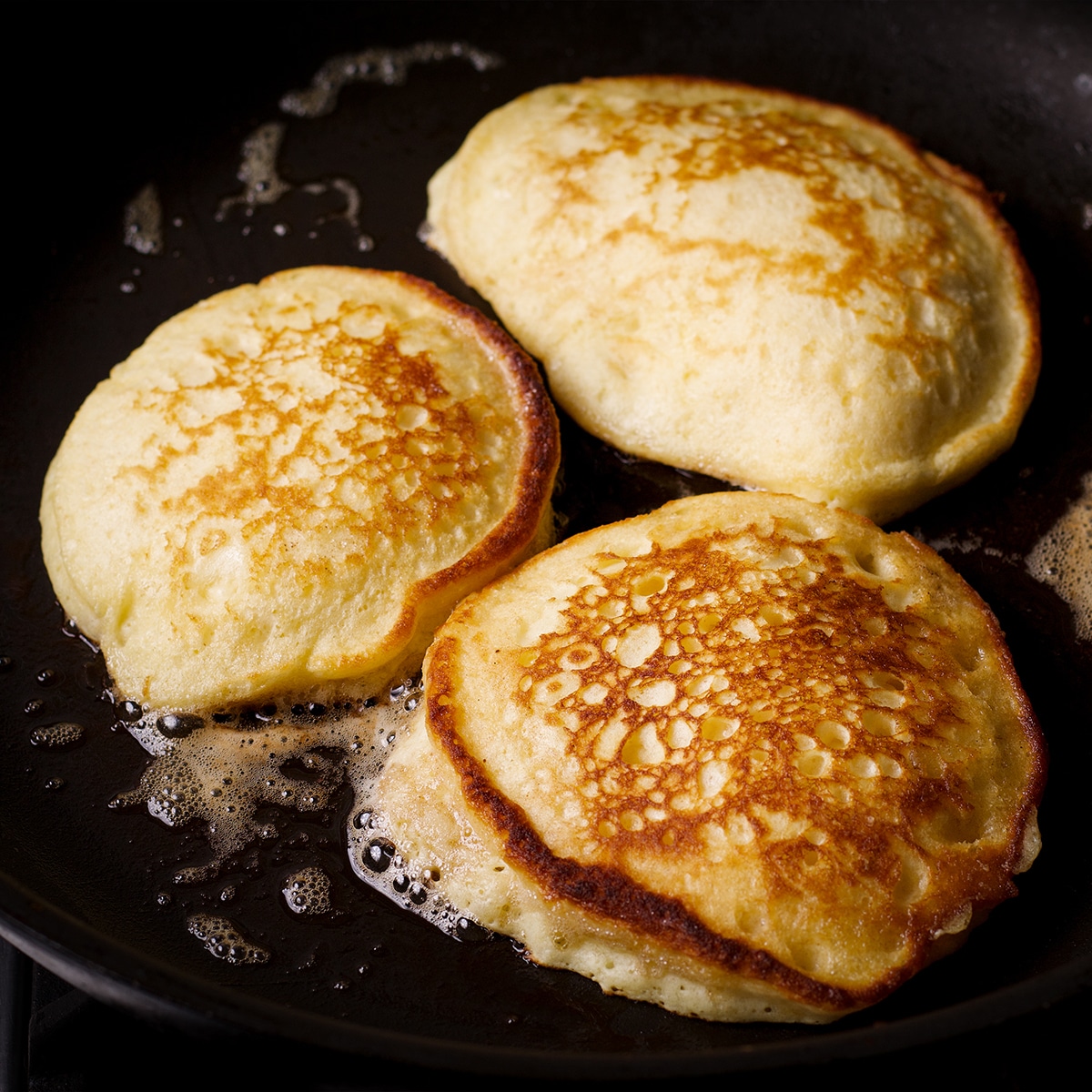
Use a spatula to flip them over and cook until browned on the second side.
Flip the pancakes out onto a plate, wipe out the skillet with a paper towel, or rinse it briefly in the sink, add a new pat of butter, and continue cooking pancakes until all of the batter has been used.
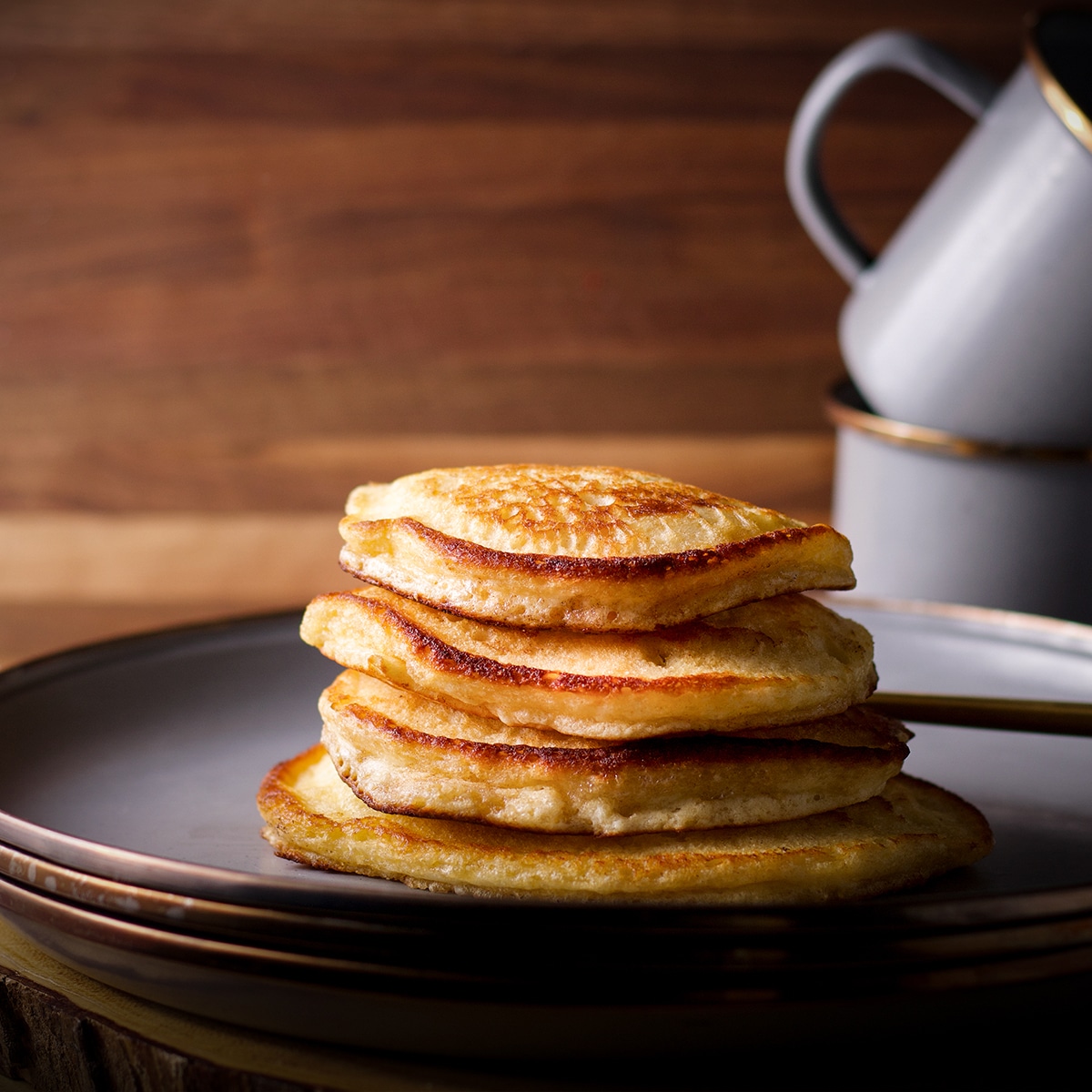

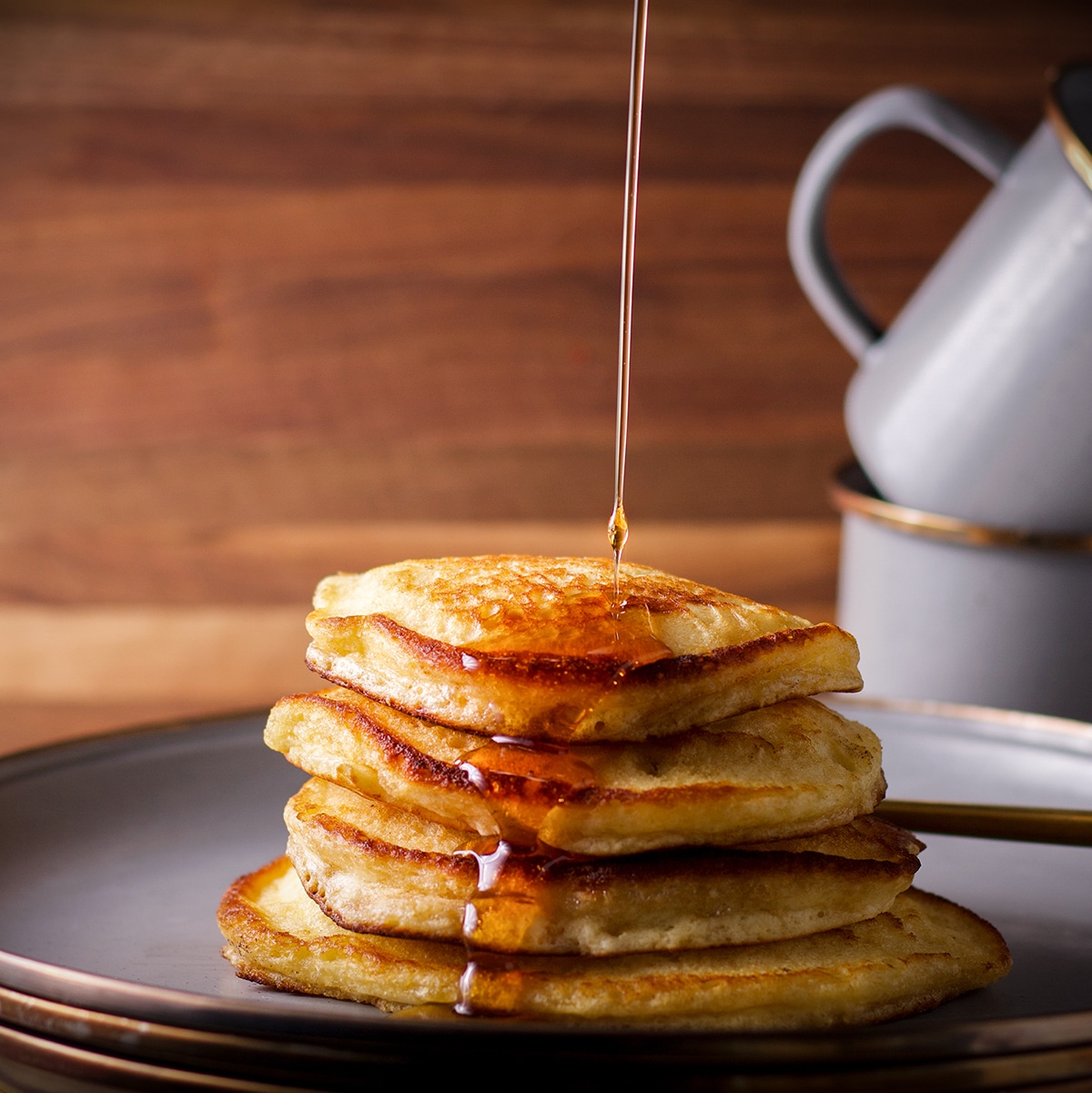
4 Tips for Soft, Fluffy Pancakes
#1. Don't over-mix the batter
When mixing pancake batter, less is more. Stir the batter JUST until all the ingredients are combined. Getting too vigorous with your mixing can cause the gluten in the flour to develop and make the pancakes chewy and tough.
So, slow your roll, and mix just until the batter is relatively smooth. It's perfectly fine if the batter is a bit lumpy.
#2. Monitor the temperature of the skillet while the pancakes cook
If the skillet gets too hot, the outside will burn before the inside of the pancakes are cooked through. On my stovetop, that usually means starting out at medium heat and then adjusting down to medium-low after the first batch or two.
Just pay attention to how quickly the outside of the pancakes are browning, and adjust the heat as necessary.
#3. For the most buttery pancakes, cook them in butter
Let me ask you a super obvious question: Do you want pancakes or do you want buttery pancakes? That's what I thought.
The thing about cooking pancakes in butter is that you've got to wipe out the skillet in between batches, or the butter will start to burn. I usually just give the skillet a quick rinse in the sink before setting it back on the burner, adding a fresh pat of butter, and cooking more pancakes. But, you can also wipe the skillet out with a towel or paper towels.
#4. Buttermilk makes the most tender, fluffy pancakes
For years, I made these pancakes with regular milk and none of us complained. Then I tried using buttermilk instead and have never looked back. Honestly, I'm not sure what took me so long.
Buttermilk does 3 super delicious things for pancakes:
- Buttermilk reacts with baking soda to help pancakes rise to their fluffiest potential.
- Buttermilk breaks down the strands of gluten, which as we've already discussed, results in super tender pancakes.
- Buttermilk adds flavor and a lovely, subtle tang that compliments and balances out the sweetness in these pancakes.
If you really want to make pancakes but don't have any buttermilk, here are several ways to make a great buttermilk substitute.

Delicious Pancake Toppings
- Maple syrup!
- With this super easy 10-minute Berry Sauce.
- Cherry Sauce: “This sauce is simple, easy and delicious. Thank you for sharing this recipe, it was what I was looking for to use on pancakes.”
- To make chocolate chip pancakes: Stir a cup (or more!) of mini chocolate chips into the batter.
- Top pancakes with a smear of Nutella, peanut butter, or any kind of nut butter
- Spread pancakes with any kind of jam or preserves. Two of my favorites are Strawberry Rhubarb Jam and Peach Preserves.
- Sprinkle them with powdered sugar
- Top pancakes with fresh fruit and a dollop of lightly sweetened whipped cream
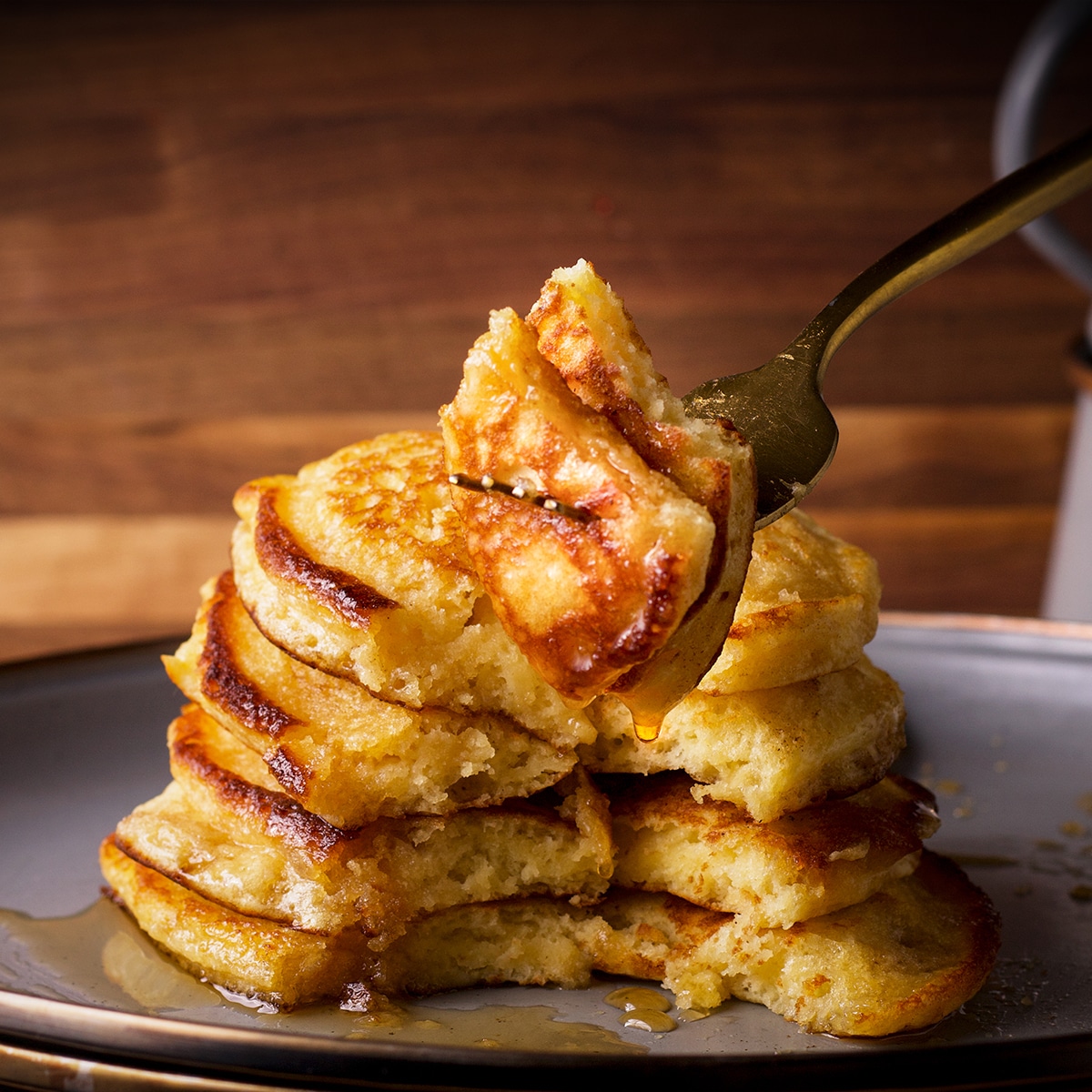
Buttermilk Pancakes FAQs
A: It's the eggs in pancake batter that hold everything together and provide structure for the little air bubbles that cause the pancakes to rise while they cook.
The other thing that eggs do for pancakes is provide richness and flavor, mostly from the fatty yolks. But, just like butter, too much of a good thing is not always a good thing. Too many eggs in pancake batter will make them dense and custardy... more akin to a soufflé than a pancake.
Not enough eggs will make the pancakes dry and with a texture that's similar to biscuits. (Which is exactly why we don't put eggs in biscuits.)
In this recipe, 4 eggs is the magic number, striking that delicious balance between flavor, structure, and tenderness.
No buttermilk? No problem! DIY Buttermilk: How to make your own
You can, but I don't recommend it.
Too little butter creates pancakes that are tough, dry, and almost crispy. In contrast, too much butter makes pancakes flat and dense.
In this recipe, I've found that 4 tablespoons is the perfect amount, giving the pancakes a delicious buttery flavor and tender, fluffy texture.
Wheat flour contains two proteins that, when combined with liquid, form gluten. Maximizing gluten development is imperative when making homemade bread or fresh pasta. But since gluten development creates structure and chewiness, it's something we want to avoid in cakes, cookies, pie crust, and pancakes.
To minimize gluten development, mix the batter as little as possible and use butter in the pancake batter.
Mix the batter with a spoon or a whisk, stirring just long enough moisten all the dry ingredients. There will be some lumps in the batter, and that is ok. In fact, it's what you want.
Fat helps make these pancakes flavorful and moist, AND inhibits gluten development. Fat also breaks the gluten that is formed into shorter strands, giving these pancakes a tender texture.
Everyday Pancakes is a Building Block Recipe
Building block recipes are tried-and-true recipes that I consider foundational to great home baking. They are the kind of recipes I come back to over and over again, sometimes baking them as is, but often using them as a jumping off point to create something new. > Scroll through all Building Block recipes.
Last but not least, around my house, we love a lazy Sunday morning with nothing to do but eat pancakes with eggs and sausage. Even better if they are all piled together in a cheesy sausage hash brown casserole. 😋
+ For a step-by-step video of how to make these pancakes, click here.

+ Subscribe to my newsletter for new and exclusive recipes in your in-box every month! As a full time traveler, living, working, cooking, and baking from a 5th wheel RV, it's also where I share our experiences of life on the road.
📖 Recipe
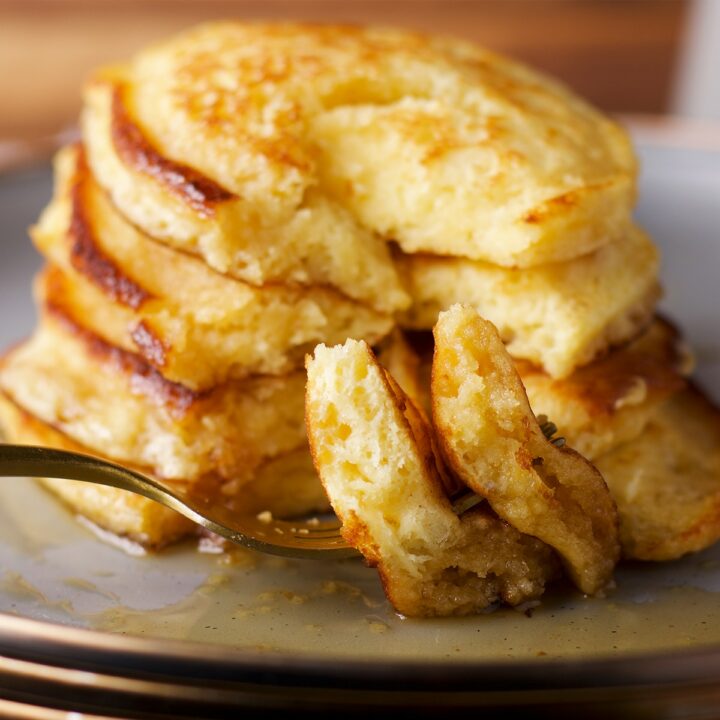
Everyday Buttermilk Pancakes
This has been my go-to pancake recipe for more years than I care to count because it produces tender, fluffy pancakes with minimal time and effort.
Ingredients
- 2 cups + 2 tablespoons (255 grams) all-purpose flour
- 2 teaspoons (8 grams) baking powder
- 1 teaspoon (6 grams) baking soda
- 1 teaspoon (6 grams) salt
- 5 tablespoons (62 grams) granulated sugar
- 4 large eggs
- 2 cups (16 ounces/ 454 grams) buttermilk (*seen note below for substitution)
- 4 tablespoons (56 grams) melted butter, PLUS an additional 4 - 6 tablespoons (56 - 84 grams) butter for the skillet
Instructions
- Add the flour, baking powder, baking soda, salt, and sugar to a bowl and stir with a wire whisk to combine.
- Add the eggs, buttermilk, and melted butter and whisk just until the ingredients are combined. You will have a few small lumps - that's ok. It's important to not overwork the batter.
- Set a skillet over medium heat and add enough butter to generously coat the bottom of the skillet.
- When the butter has melted, add the batter to the skillet to form pancakes. I usually use about ⅓ cup of batter per pancake - BUT, don't add the batter all at once. Add a small amount of batter to the skillet to make small pancakes. As the batter begins to set, carefully add more batter to the top of each pancake. This is how to make thick, fluffy pancakes. (See photos above.)
- When the tops of the pancakes are covered in small bubbles and the sides look set, they are ready to flip. Use a spatula to flip them over and cook until browned on the second side. (*See note below about monitoring temperature.)
- Flip the pancakes out onto a plate, wipe out the skillet with a paper towel, or rinse it briefly in the sink, add a new pat of butter, and continue cooking pancakes until all of the batter has been used.
- Serve with plenty of maple syrup, berry sauce, cherry sauce, or whatever you like to top your pancakes with.
Notes
- No buttermilk? No problem! DIY Buttermilk: How to make your own
- For soft and tender pancakes, mix just until the batter comes together. It's perfectly fine if the batter is a bit lumpy.
- It's important to monitor the temperature of the skillet while the pancakes cook. If the skillet gets too hot, the outside will burn before the inside of the pancakes are cooked through. On my stovetop, that usually means starting out at medium heat and then adjusting down to medium-low after the first batch or two of pancakes. Just pay attention to how quickly the outside of the pancakes are browning, and adjust the heat as necessary.
- When cooking pancakes in butter it's important to rinse or wipe out the skillet in between each batch and add a new pat of butter. If you don't, the butter will start to burn, flavoring the outside of your pancakes with the taste of burnt butter. I usually do this in the sink, running water from the tap into the hot skillet, swishing it around, and dumping it out. I don't even bother drying the skillet - the heat from the burner will quickly evaporate any droplets of water. You can also wipe the skillet out with a rag or paper towel.
Recommended Products
As an Amazon Associate and member of other affiliate programs, I earn from qualifying purchases.
Nutrition Information:
Yield: 6 Serving Size: 1Amount Per Serving: Calories: 342Total Fat: 12gSaturated Fat: 6gTrans Fat: 0gUnsaturated Fat: 5gCholesterol: 148mgSodium: 977mgCarbohydrates: 47gFiber: 1gSugar: 15gProtein: 11g


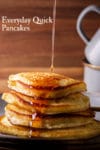
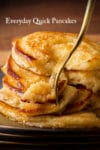
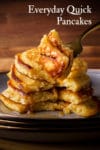
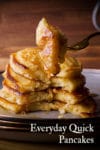



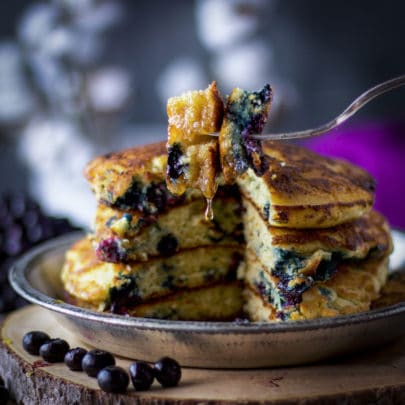
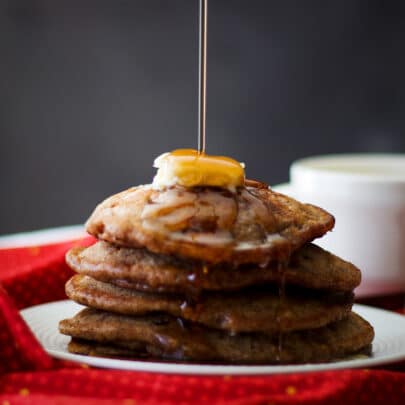

Meg Hunt says
I made these pancakes today (recipe halved) with eggnog, dropping the sugar as you suggested. Fabulous, but not a strong eggnog flavor. Next time I will try with the buttermilk.
Rebecca Blackwell says
I'm so glad to hear that the eggnog worked! I'm going to try it later this week! Thank you for taking the time to let me know. And thank you for participating in the bake club! xo
Barbara Meineke says
This is a delicious “Everyday Buttermilk Pancake” recipe. I followed every direction and instruction tip you offered. The only alteration of the recipe was to cut it in half as there are only 2 of us plus an elderly neighbor I send meals to often. The heat instruction was a big tip I watched closely. I used less than a 1/3 of a cup of batter for each pancake as my skillet was small and I wanted smaller cakes. They turned out golden just like your photo and they were light and fluffy. Thanks so much for a great recipe.
Rebecca Blackwell says
I am so happy to hear that you liked this recipe Barbara! Thank you so much for taking the time to leave a comment for me! I truly appreciate it! xo